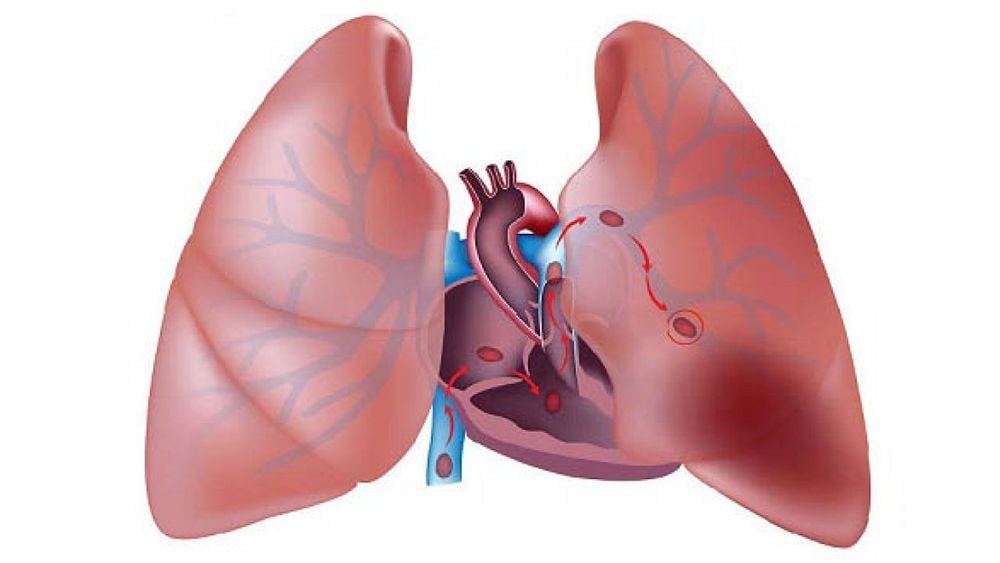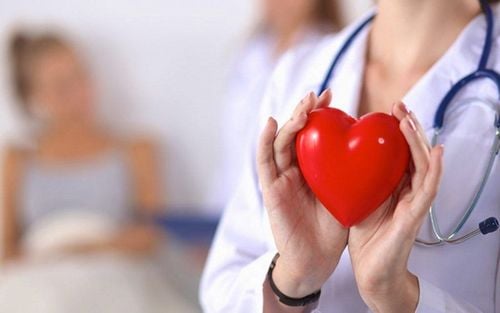This is an automatically translated article.
This article is expertly consulted by Master, Doctor Nguyen Le Duc Hoang - Emergency Medicine Doctor - Emergency Department - Vinmec Danang International Hospital.EtCO2 is the pressure or concentration of carbon dioxide measured non-invasively at the end of expiration of the patient. The EtCO2 monitor reading is an important value in the chart, which is the patient's end-expiratory CO2 pressure or concentration.
1. What is EtCO2?
EtCO2 is the pressure or concentration of carbon dioxide measured non-invasively at the end of expiration of the patient. Monitor EtCO2 is an important value in the chart, which is the patient's end-expiratory CO2 pressure or concentration.The histogram, also known as capnography, is a chart that records the instantaneous CO2 concentrations of inhaled (FiCO2) and exhaled air throughout the respiratory cycle and displays only the number of EtCO2 values, allowing a direct assessment of the condition of the patient. respiratory status of the patient as well as indirectly the metabolism and circulation of the patient.
Types of charts include:
Sampling chart on ventilator pipeline Diagram taking sample from ventilator side line
2. Measure CO2 at the end of exhalation
Applications of end-expiratory CO2 measurement:Volumetric histogram: Record exhaled CO2 graph against expiratory volume and measure dead space, alveolar tidal volume, effective ventilation, test detect pulmonary embolism. Measurement of cardiac flow: Applying Fick principle Measuring partial pressure of CO2 in gastric mucosa (Pgast.CO2): high pressure difference (> 25mmHg) Pgast.CO2 - PaCO2 occurs when blood flow to the stomach is decreased (visceral ischemia) ) and has prognostic value for complications after surgery Sublingual CT (PslCO2): assessment of tissue metabolism. In addition, other factors affecting EtCO2 are metabolism, circulation, and ventilation. Since CO2 production is due to CO2-generating metabolism in the tissues, CO2 is transported to the lungs by the circulatory system and CO2 is eliminated by ventilation.

3. Surveying methods
3.1 Indications of the chart
Evidence of correct intubation Evaluate the effectiveness of cardiopulmonary resuscitation techniques during cardiac arrest Monitoring apnea Monitoring ventilation to assess ventilation efficiency, adjusting ventilation parameters (eg in neurosurgery) , treatment of bronchospasm and asthma attacks), determination of optimal PEEP levels, weaning from ventilators, control of metabolic changes, measurement of dead space and endogenous PEEP, monitoring and early diagnosis of pulmonary embolism due to air .
3.2 Methods of measuring cartography
The measurement methods include: mass spectrometry such as laser spectroscopy (RAMAN principle), infrared spectroscopy, spectroscopy - acoustics. The paper chemical indicator changes color when exposed to 4% CO2 concentration in the gas stream, has a fast reaction time and is used in outpatient practice.Mass spectrometry is the separation of gases and vapors according to their molecular weights and charges, allowing simultaneous analysis of gases and vapors. However, this system is expensive and cumbersome. Some models allow simultaneous monitoring of many patients in different rooms (Severing Haus). This is a reference technique but is rarely used nowadays. Raman-based laser spectroscopy based on the different energy states (rotation or vibration) produced when an intense monochromatic argon laser beam is absorbed by different particles, can measure anesthetic gases and vapors , portable but cumbersome Infrared spectroscopy is the most commonly used method in clinical practice, based on CO2 with specific and incomplete absorption properties of 4.3 μm selective infrared wavelengths for light absorbed is proportional to the concentration of CO2 molecules. Measure with a sensor cell containing a known concentration of CO2. Anesthesia and vapors are recorded and displayed by the monitor in mmHg or % (1 volume % = 1 KPa = 7.6 mmHg), relatively low cost and compact. Acoustic spectroscopy is the modification of the infrared spectrum using an acoustic technique rather than an optical method. Advantages include more efficiency, greater reliability, less maintenance, and less need for calibration. In summary, the EtCO2 monitor reading is an important value in the chart, which is the patient's end-expiratory CO2 pressure or concentration. This index helps to assess the alveolar tidal volume, whether ventilation is effective, or test to detect pulmonary embolism,...
Vinmec International General Hospital is a high-quality medical facility in Vietnam with a team of highly qualified, well-trained and experienced doctors and nurses at home and abroad.
A system of modern and advanced medical equipment, possessing many of the best machines in the world, helping to detect many difficult and dangerous diseases in a short time, supporting the diagnosis and treatment of doctors the most effective. The hospital space is designed according to 5-star hotel standards, giving patients comfort, friendliness and peace of mind.
Please dial HOTLINE for more information or register for an appointment HERE. Download MyVinmec app to make appointments faster and to manage your bookings easily.









